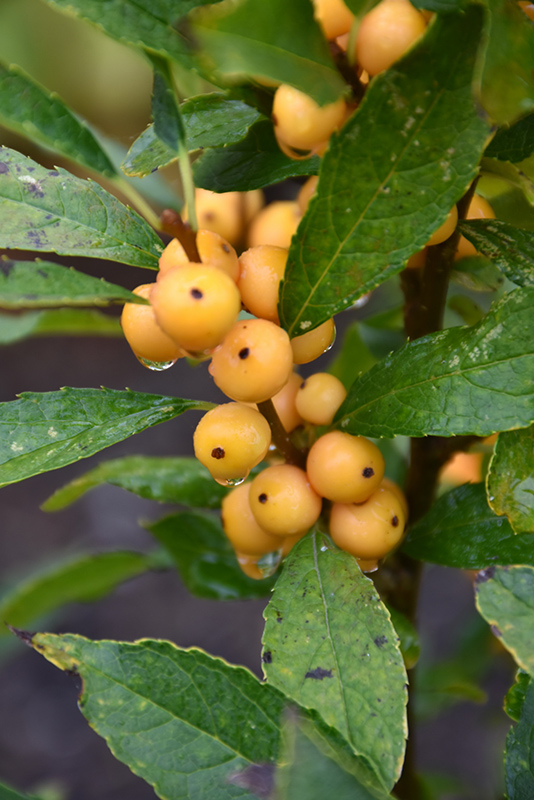

![]()


![]()
A deciduous holly with delightful berries!
Why We Love It:
Winterberries are native to North America and provide great aesthetic and wildlife value! Mid-summer blooms lead to berries in fall (with proper pollination) that last into winter. The berries are long-lasting; they do not immediately fall to the ground when ripe. Thus, a plethora of bird species, as well as some small mammals, can use the berries as a winter food source. Note that, while fantastic for wildlife, the berries should not be eaten by people or pets! Instead, you can enjoy the birds and color they bring to the winter landscape. Winterberries are best known for their red-colored berries, but there are also varieties with yellow or orange berries. Stems can be cut from winterberries to include in cut flower arrangements and decor. The red berries, in particular, are a favorite for Christmastime!
Know Before You Plant:
Winterberries have separate male and female plants. Planting both is necessary for berry production, which occurs only on females. For successful pollination, be sure the male and female varieties you plant flower at the same time. Note that winterberry flowers occur on new growth, so it is best to prune in spring before this growth appears. They are not good candidates for shearing.
Where It Thrives:
This is a shrub with many potential landscape uses! Consider planting winterberries to form a shrub border or natural hedge, in a rain garden, as specimens, for foundation color, or to naturalize an area. In nature, they are found in moist areas like bogs and wetlands. Your winterberries would love to be planted near a pond or in a low elevation area in your landscape.
Acidic soil is preferred by winterberries. For the best performance, check your soil pH, and if it is neutral to alkaline, use an appropriate acidifying product to decrease the pH.
Retail Hours
Sun: CLOSED
Mon: CLOSED
Tue: 9:00am - 6:00pm
Wed: 9:00am - 6:00pm
Thu: 9:00am - 6:00pm
Fri: 9:00am - 6:00pm
Sat: 9:00am - 4:00pm